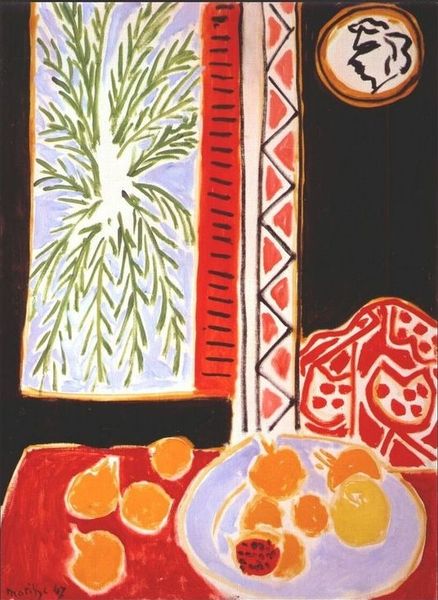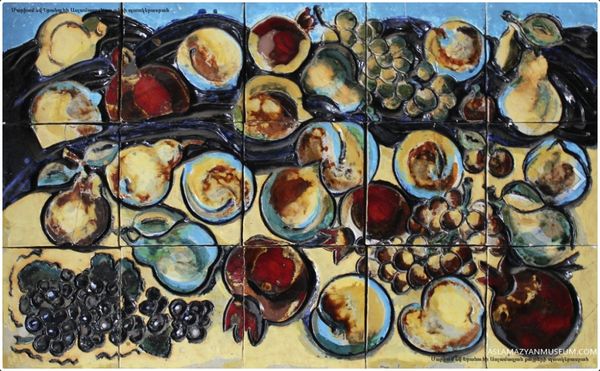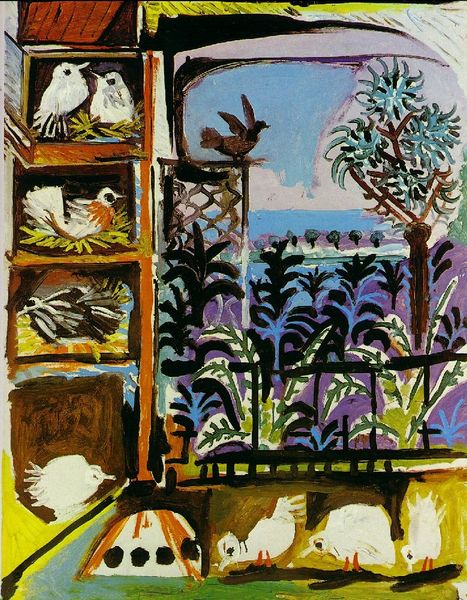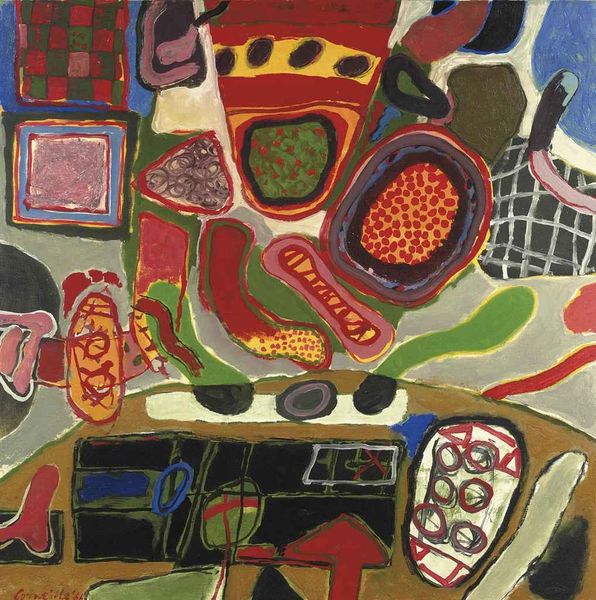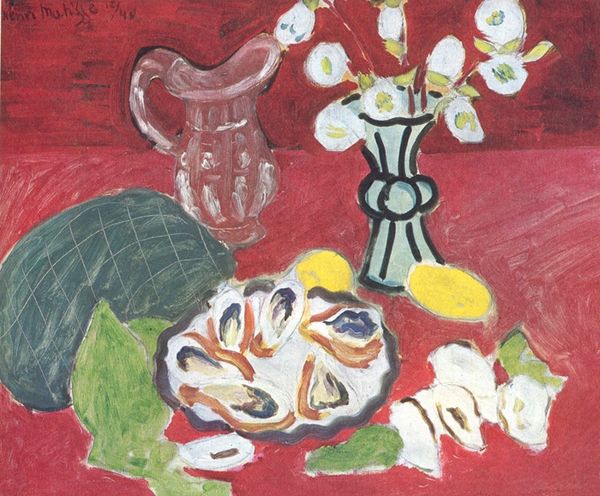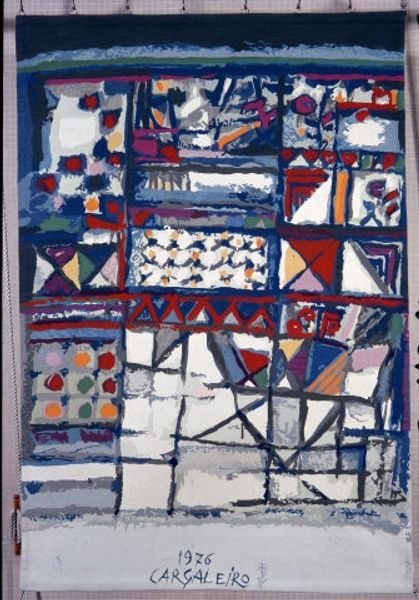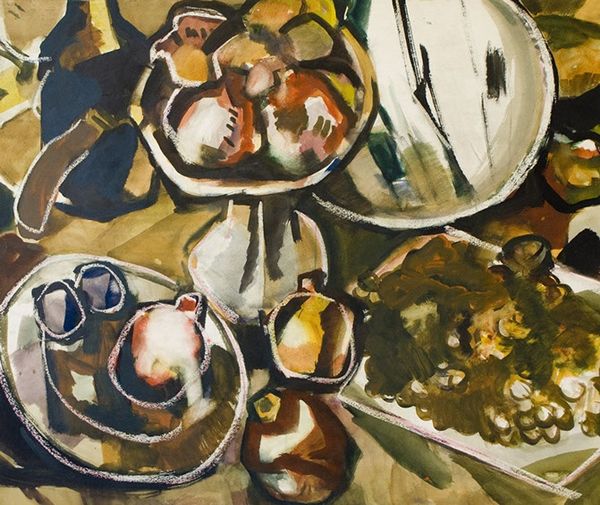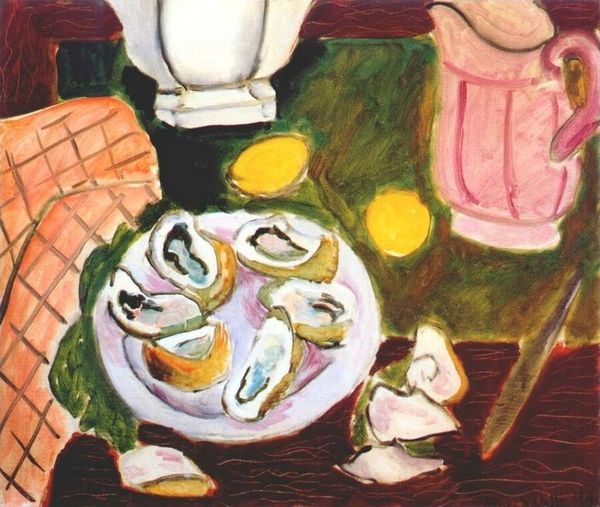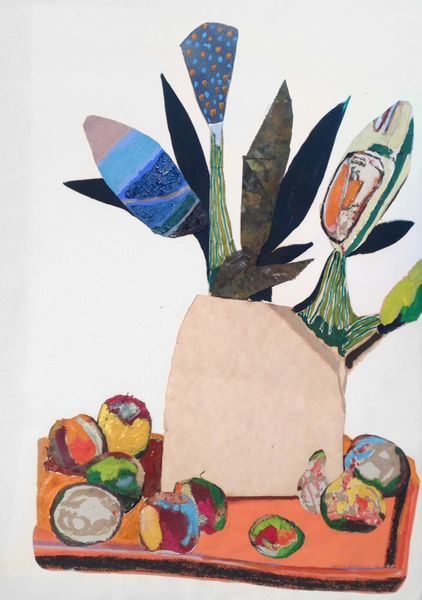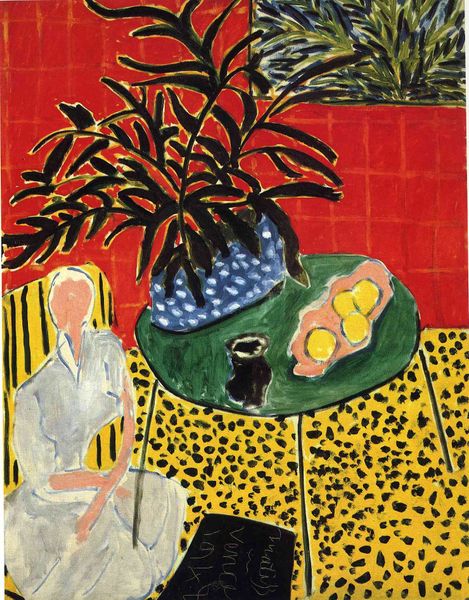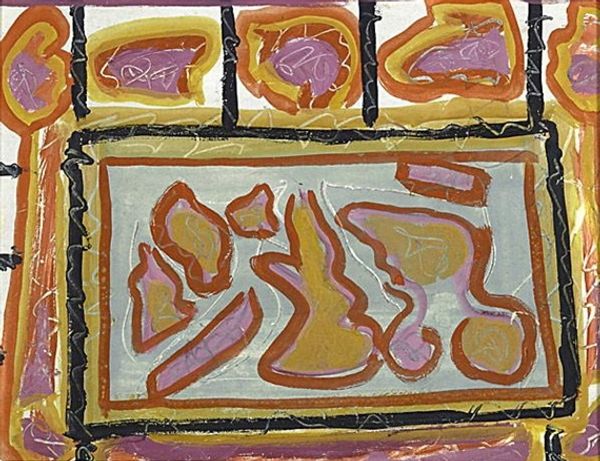
Dimensions: 116.2 x 89.2 cm
Copyright: Henri Matisse,Fair Use
Editor: This is "Interior with Egyptian Curtain," painted by Henri Matisse in 1948 using mixed media. It strikes me as such a vibrant, almost aggressively patterned composition, pushing the boundaries of interior space. What do you make of it? Curator: Well, look at how Matisse plays with visual codes, with the idea of “Egypt” acting less as a literal place and more as a collection of potent symbols. Notice how the curtain motif on the right is like a visual portal. Do you feel how that pulls at our understanding of 'inside' versus 'outside?' Editor: I do. The window with the stylized leaves, too – it almost feels like another patterned curtain, rather than a view. Curator: Precisely! Matisse invites us to contemplate how we frame our world, how memory and cultural imagination shape our perceptions. Egyptian imagery, for Matisse, wasn’t about accurate representation but about the emotional weight those symbols carried: exoticism, history, and perhaps even a sense of timelessness. Editor: So, it’s less about Egypt itself, and more about what "Egypt" represents? Curator: Yes! Think of how artists throughout history have used exotic locales or historical periods to project contemporary anxieties and desires. Matisse uses Egypt as a stage upon which to explore those sensations. Look, too, how he abstracts the still life—the oranges, the table—almost into flat planes of colour, collapsing perspective. It's an intense layering of visual symbols, almost challenging the viewer. Editor: It really shifts my understanding to think of it as less of a room and more of a symbolic space. I was so focused on the clashing patterns before, but the layering of meanings is much richer. Curator: Exactly. Art like this teaches us to see beyond the immediate image, urging us to decode the cultural memory embedded within visual forms.
Comments
No comments
Be the first to comment and join the conversation on the ultimate creative platform.
